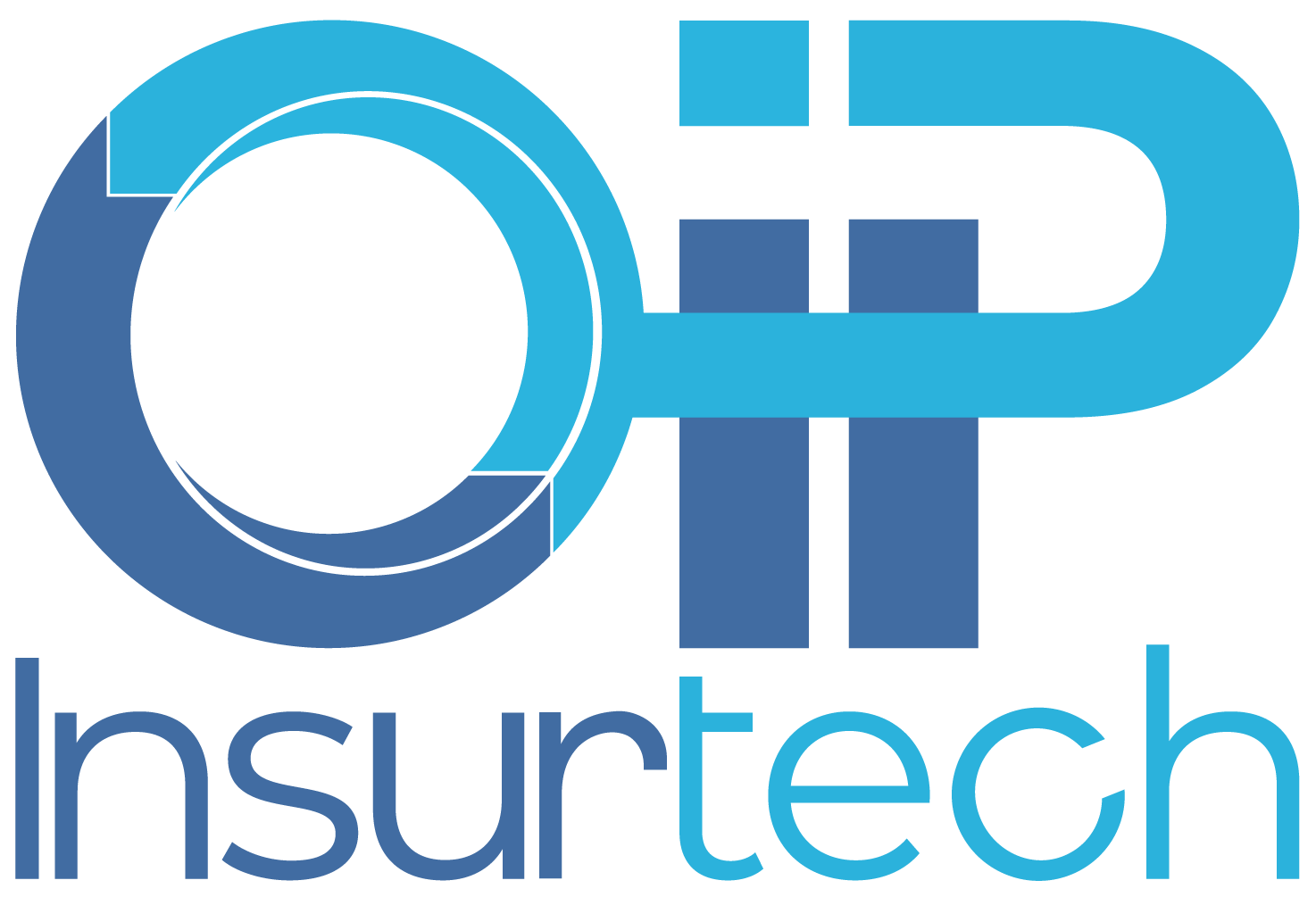Insurance Data Extraction Software That Works Like Your Best Employee – Only Faster
Insurance is full of paperwork.
Every day, underwriters and claims teams deal with submissions, endorsements, loss runs, and all kinds of supporting documents.
Each one needs to be reviewed, entered, and checked manually, which slows down the process.
Data entry eats up hours. Errors pile up. Customers wait longer. And your team spends more time copying than thinking.
That’s why more insurers are turning to insurance data extraction software.
These tools extract data from PDFs, scans, and even photos, and send it directly into your systems.
No more rekeying. No more delays.
We’ll break down what insurance data extraction software actually does, how it helps your business, and why now is the time to start using it.
What Is Insurance Data Extraction Software?
Insurance data extraction software is a tool that pulls structured data from unstructured sources. Think scanned PDFs, ACORD forms, loss runs, emails, and even handwritten documents.
Instead of making someone retype every number and field, the software:
- Reads the document using technologies like OCR (Optical Character Recognition)
- Understands it with AI, machine learning, and natural language processing
- Sorts and tags key data fields (like “Named Insured,” “Effective Date,” “Total Incurred,” etc.)
- Sends that data into your core systems – AMS, PAS, CRM, or wherever you need it
It means no more toggling between systems, no more rekeying submissions, and no more manual sorting of loss histories or SOVs. Just usable, accurate data in the right place – fast.
And it’s not just smarter OCR.
Leading tools like NT Extractor take things further by validating the data, flagging missing information, and adapting to your workflow over time.
The best part? The software works 24/7, handles thousands of documents at once, and keeps learning as it goes, making your operation faster and more accurate with every use.

Why Manual Data Entry Holds Insurers Back
Insurance companies deal with a flood of documents every day – submissions, loss runs, endorsements, claims, SOVs, and more. Processing them manually creates a chain reaction of problems:
1. It’s slow
Staff spend hours reviewing documents, pulling key data, and re-entering it into core systems. This creates backlogs, especially during peak times like CAT events or renewal seasons.
2. It’s error-prone
Typos, skipped fields, or mismatched data creep in. Even small mistakes can delay quotes, trigger rework, or lead to claim denials.
3. Adds hidden costs
Manual processing drives up overhead—extra staff, more QA checks, slower turnaround. According to McKinsey, operational inefficiencies in insurance can lead to a 30% productivity gap compared to best-in-class peers.
4. Frustrates customers
Delays, data requests, and processing hiccups erode trust. Policyholders expect fast, digital service. If you can’t deliver it, they’ll find someone who can.
5. Hurts growth
Underwriters, adjusters, and service teams spend time on admin instead of high-value tasks like risk analysis, client support, or strategy.
In short, manual entry is more than inefficient. It’s a drag on the entire business.
What Insurance Data Extraction Software Does Differently
Insurance data extraction software is designed to handle the complex, unstructured world of insurance documents without the need for human intervention.
Here’s how it works (and why it’s a game-changer):
Reads documents like a human but faster
Using OCR (Optical Character Recognition) and AI, the software scans PDFs, emails, images, or scanned forms to pull out key data: policyholder names, coverage limits, loss dates, and more.
Understands what’s important
Unlike basic OCR, modern extraction tools use intelligent document processing (IDP) and natural language processing (NLP) to understand context.
It knows a loss run from a submission. A declaration page from an endorsement.
Organizes and routes the data
Once extracted, the data is structured and automatically routed into your core systems – AMS, PAS, CRM, or claims platforms, without manual input or rekeying.
Catches missing or inconsistent data
AI models validate entries against business rules, flagging gaps or suspicious patterns before the data hits your workflow.
Keeps improving
With machine learning, these systems get smarter over time. They learn your templates, terminology, and edge cases, delivering even better results with each new document.
Submissions get cleared faster.
Loss runs are digitized and summarized in minutes.
Quotes are issued quicker, with fewer follow-ups.
Claims are processed with less friction and more accuracy.
Industry analysts, including Gartner, highlight that intelligent document processing tools can significantly reduce manual processing efforts when integrated with policy and claims systems. While the exact percentage varies, many organizations report substantial efficiency gains and cost savings from IDP adoption.
It isn’t just automation. It’s clarity, speed, and control delivered at scale.
Use Cases That Actually Move the Needle
Insurance data extraction software is built to solve real problems that slow insurers down.
Here are the use cases where it delivers immediate value:
New business submissions
Carriers and MGAs are flooded with emails and attachments – applications, ACORD forms, SOVs, and handwritten notes.
Data extraction software automatically scans and sorts these submissions, pulling out critical fields like coverage amounts, dates, and named insureds.
That data flows into underwriting systems instantly so your team can prioritize high-value accounts, quote faster, and avoid bottlenecks.
Loss run processing
Manually reading through years of loss run data? Painful.
Extraction tools parse and structure this data in seconds.
Underwriters can now see loss history trends, claim frequencies, and severity scores without clicking through 20-page PDFs. You move faster, with better risk insight and fewer missed details.
Claims intake and triage
FNOL, repair invoices, police reports – claims documents come in all shapes and formats. Data extraction tools handle the mess.
Tools identify key data points, assign the right case codes, and push everything into the claims management system.
That means adjusters can jump in earlier with cleaner, more complete files.
Policy servicing & endorsements
Every policy change means more paperwork. With smart data extraction, endorsements, renewals, and mid-term adjustments are processed faster and with fewer errors.
Clients get what they need sooner, and your team avoids the rework that drags down productivity.
Historical document digitization
Legacy files contain decades of insight. If you can access it.
Extraction tools can scan entire archives, converting physical or scanned documents into searchable, usable data, enabling analytics, benchmarking, and pricing models that rely on deep historical context.
According to McKinsey & Company, automating document-heavy workflows in insurance, such as claims processing and underwriting, can lead to significant efficiency improvements, including faster processing times and reduced operational costs.
While some reports cite processing speed increases of 50% or more, the exact impact depends on the specific processes automated and the technologies used.

The Benefits You Can Measure
Insurance data extraction software doesn’t just feel faster. It delivers measurable results that impact your bottom line.
Faster processing times
Manual data entry can take hours per document.
With automation, data is extracted, verified, and routed in minutes. That means you quote quicker, settle claims sooner, and reduce cycle times across the board.
Lower operational costs
Every hour your team spends retyping data is an hour not spent on higher-value work.
Automating document intake reduces the need for manual entry and shrinks overhead, especially during peak seasons when you’d otherwise need temp staff.
Better accuracy and compliance
Manual errors aren’t just inconvenient. They’re costly.
A miskeyed number in a loss run or a missed exclusion clause can trigger pricing errors, underpayments, or compliance issues.
With extraction software:
- Data is validated in real-time
- Mistakes are flagged before they reach your core system
- Audit trails are automatically logged for regulatory peace of mind
Improved team productivity
Your team doesn’t want to spend their day toggling between documents and systems. Automating data intake frees them up to focus on decisions – not documentation.
That boosts morale, reduces burnout, and helps you retain top talent in a tough labor market.
Better customer experience
Quicker turnarounds, fewer mistakes, and faster communication all translate to happier policyholders.
And in a competitive market, that keeps your book from walking away at renewal.
What to Look for in Insurance Data Extraction Software
Not all data extraction tools are built for insurance.
Choosing the right one means understanding what matters for carriers, MGAs, and TPAs.
1. Insurance-specific intelligence
Generic OCR won’t cut it.
You need software trained on actual insurance documents – like ACORD forms, SOVs, loss runs, and endorsements. The tool should recognize coverage terms, limits, and clauses without you having to build a template from scratch.
Look for vendors with experience in P&C workflows and understand the difference between a declaration page and a schedule of values.
2. Accuracy over hype
Many vendors claim “99% accuracy,” but not all deliver it in real-world conditions.
Ask for test cases using your own documents.
Does it handle poor scans? Handwritten notes? Mixed formats in one submission?
Getting solid performance on messy documents is better than flashy numbers on ideal ones.
3. Integration options
The tool should fit into your current environment, not force you to rebuild it.
Look for:
- API support for modern AMS and claims platforms
- RPA compatibility for legacy systems
- Pre-built connectors for tools you already use
Integration flexibility is key to avoiding bottlenecks and manual rework.
4. Human-in-the-loop support
Even the best AI won’t catch every edge case.
That’s why your solution should allow for human review, either by your own team or the vendor’s insurance-trained staff.
This model improves confidence, accuracy, and compliance.
5. Security and compliance
You’re handling sensitive data. Your vendor should offer:
- End-to-end encryption
- SOC 2 or ISO 27001 certifications
- Detailed access controls and audit logs
Recent Deloitte research identifies cybersecurity as a leading concern for insurers adopting AI solutions, alongside other challenges such as regulatory compliance, data privacy, and integration with legacy systems.
6. Scalability for peak periods
Can the tool handle thousands of documents during CAT events or renewal season?
Ensure the platform can scale without sacrificing performance when your operations need it most.
Real-World Use Cases That Prove the Value
Insurance data extraction software isn’t just about theory. It’s already transforming how carriers, MGAs, and TPAs work.
Here are a few real-world scenarios where it makes a measurable impact:
Submissions and risk clearance
High-volume MGAs often receive dozens, or even hundreds, of submissions daily. Each one comes in a different format: ACORD forms, broker emails, attachments, and handwritten notes.
Without automation, it takes hours to sort and extract the necessary data to quote.
With data extraction software:
- Submission documents are ingested and classified automatically.
- Coverage limits, named insureds, and locations are extracted and pushed into the underwriting system.
- Underwriters get a quote-ready file in minutes, not hours.
Loss run analysis
Loss runs often contain dense claim histories spanning years and multiple carriers. Extracting relevant details manually is tedious and error-prone.
With AI-powered data extraction:
- Loss histories are digitized and structured by claim type, amount, and cause of loss.
- Adjusters and underwriters can quickly identify patterns and assess risk.
This speeds up underwriting decisions and improves pricing accuracy.
Claims documentation intake
During a CAT event, TPAs might receive thousands of claims documents in a week – photos, repair estimates, and police reports.
Data extraction tools:
- Classify each document
- Pull out key details (claim numbers, loss date, damage estimate)
- Populate the claims system in real-time
It allows adjusters to process valid claims faster and flag those needing more attention.
Renewals and endorsements
For complex commercial accounts, renewals often involve dozens of documents: previous policies, endorsements, and schedules of values.
Instead of sifting through PDFs manually, extraction software can:
- Surface key changes from prior terms
- Highlight updated values or limits
- Pre-fill renewal forms and flag missing items
How to Successfully Implement Insurance Data Extraction Software
Bringing automation into your insurance operation can feel overwhelming, but with the right steps, it becomes a strategic shift rather than a tech headache.
1. Start with your workflow, not the tool
Too many insurers rush to adopt automation tools without understanding where the inefficiencies really are.
Start by:
- Mapping out your current workflows
- Identifying where delays or rework happen (e.g., during submissions, renewals, or claims intake)
- Spotting repetitive data entry tasks
Once you see the bottlenecks, you’ll know exactly where software can make the biggest impact.
2. Choose a vendor that understands insurance
This is non-negotiable.
A generic OCR vendor might get the words right—but miss the meaning of “named insured,” “additional interest,” or “loss payee.”
Look for:
- Software trained on insurance-specific documents
- Teams with actual insurance experience
- Proven results in submissions, loss runs, policies, and endorsements
According to Accenture, most insurance executives believe that industry-specific AI solutions offer greater value and effectiveness for insurers than general-purpose AI tools. In fact, 75% of insurance leaders expect generative AI to significantly transform the industry, with many emphasizing the importance of domain expertise in AI implementation.
3. Prioritize seamless integration
If your software can’t talk to your systems, it creates more work—not less.
Whether you use a legacy PAS or a modern cloud-native core system, your data extraction tool should integrate easily:
- Via APIs for modern setups
- Or RPA (robotic process automation) for older environments
Ensure the vendor supports both paths and doesn’t require a complete system overhaul.
4. Don’t ditch humans – use them smarter
Even the best AI makes mistakes. That’s why the most successful implementations use a human-in-the-loop (HITL) model.
Let the software handle 90% of the work.
Have experienced staff stepping in only for exception handling, unstructured or heavily annotated documents, and final verification before quoting or issuing.
Such a blend ensures speed without losing accuracy or context.
5. Measure, learn, optimize
You don’t have to automate everything at once.
Start with one process, like risk clearance or loss runs, and track the results.
Key metrics to monitor:
- Time saved per document
- Accuracy improvements
- Reduction in manual rework
- Employee time reallocated to higher-value work
Once you see ROI in one area, scale to others.

Why OIP Insurtech’s Bound AI Stands Out
Most software vendors try to learn insurance from the outside in.
At OIP Insurtech, we did it the other way around. We built Bound AI from the ground up based on years of first-hand experience working with submissions, endorsements, loss runs, and claims data across the E&S and admitted markets.
Here’s what sets Bound AI apart:
Built by insurance professionals
Our team includes former underwriters, operations leads, and claims specialists who understand the pace and precision of insurance demands.
Every feature of Bound AI reflects real-world workflows, not hypothetical use cases.
More than just OCR
Bound AI isn’t just a document reader.
It’s an AI-powered platform that classifies, parses, and validates the data inside your documents. It reads PDFs, emails, scanned images, and handwritten forms and turns them into clean, structured data ready for quoting, auditing, or filing.
High accuracy, even with complex documents
From SOVs with hundreds of rows to multi-page endorsements with cross-referenced clauses, Bound AI handles it all.
Our proprietary models achieve up to 99% accuracy, even with degraded scans or unstructured layouts.
Fast turnaround, real-time results
Bound AI clears and structures data in seconds, not hours.
Whether you’re triaging a rush of new business or processing end-of-month endorsements, your team sees actionable data immediately, with no more inbox backlogs.
Fits into your ecosystem
Whether you use a modern AMS with APIs or a legacy platform that needs an RPA overlay, Bound AI plugs right in.
No need for system rebuilds, or IT overhauls.
Human-in-the-loop assurance
Where precision is non-negotiable, Bound AI allows you to add expert review.
Our insurance-trained staff flags anomalies verify outputs and retrains models as needed so your data is clean, auditable, and compliant.
Flexible deployment options
Use Bound AI as a stand-alone solution, integrate it with Bound AI for full submission-to-bind automation, or embed it into your current process as a targeted accelerator.
It’s built to work your way.
The Bottom Line
Manual data entry isn’t just slow – it’s a drag on your entire operation. It leads to missed opportunities, slower quoting, and more errors.
In a market where every minute counts, insurance data extraction software is no longer a nice-to-have – it’s the backbone of modern efficiency.
By turning static documents into structured, ready-to-use data, these tools help you quote faster, reduce rework, and unlock capacity across your team. They free underwriters to focus on decisions, not data.
They help claims teams process files in minutes, not days. And most importantly, they create a foundation for automation, analytics, and future growth.
But not all solutions are built for insurance.
Bound AI was.
Built by insurance pros. Trained on real documents. Designed to plug into the way you already work.
So, if you’re ready to stop retyping PDFs and start working smarter, let’s talk.

